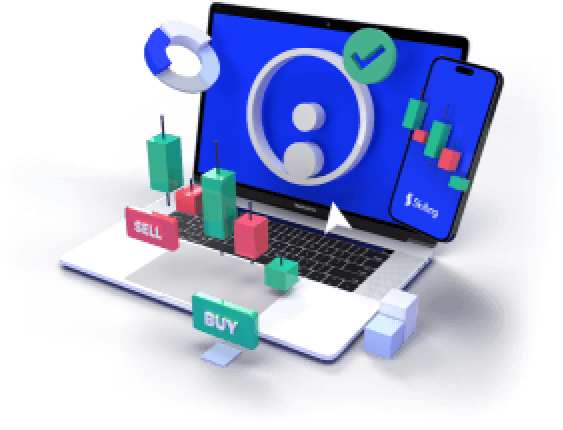

A falling wedge pattern in trading is usually seen by traders as a bullish pattern. This means it often signals that the price of an asset might rise soon. The pattern forms when the price is moving downwards, but the lows are becoming less steep compared to the highs. This creates a wedge shape on the chart, with the price action narrowing over time. Traders look for this pattern to spot potential buying opportunities, as it could indicate that the downward trend may be coming to an end and a reversal could be on the horizon. However, it's important to note that patterns are not guaranteed indicators, and market conditions could change unexpectedly. Always conduct thorough research before making any trading decisions. So, what is a falling wedge pattern and how do you trade it?
What is a falling wedge pattern and what does it tell you in trading?
A falling wedge pattern is a chart pattern that can appear when the price of an asset, like stocks, Forex, or even cryptocurrencies, is declining. This pattern is formed by two trendlines: one that connects the highs of the price movements and slopes down, and another that connects the lows and also slopes down, but at a less steep angle. The lines converge, creating a wedge shape.
In trading, a falling wedge is usually seen as a bullish signal, meaning it suggests that the price might rise in the future. This pattern indicates that while the price is dropping, the rate of decline is slowing down, which could lead to a reversal and an upward move.
When does the falling wedge pattern occur during trading?
For example, as you can see in the Bitcoin price chart below, Bitcoin started the downtrend at around $72,000, and the trend continued down to about $56,500 before bouncing off and going higher to around $67,600 at the time of this writing.

Source: tradingview.com, July 28, 2024, 10.37 UTC
How to Spot and trade the falling wedge pattern
To spot a falling wedge pattern, first look for a downtrend in the asset's price. The falling wedge is formed by two downward-sloping trendlines that converge. The upper trendline connects the highs, while the lower trendline connects the lows. The key is that the slope of the upper trendline is steeper than the lower one, creating a wedge shape that narrows over time. This pattern typically signals that the asset's price might soon reverse and start going up.
To trade the falling wedge pattern, follow these steps:
- Identify the pattern: Look for a downtrend where the price is making lower highs and lower lows, but with the lows becoming less steep. The pattern should be visible on a price chart and include at least five contact points (two on one trendline and three on the other, or vice versa).
- Wait for a breakout: The breakout is when the price moves above the upper trendline of the wedge. This is a key signal that the downtrend might be ending. However, it's important to wait for confirmation of the breakout, such as a strong price move above the trendline with increased trading volume.
- Set your entry point: Once the breakout is confirmed, you can enter a trade by buying the asset.
- Determine your stop loss and target price: Set a stop loss just below the lower trendline to limit potential losses if the breakout fails. For the target price, a common strategy is to measure the widest part of the wedge and project that distance from the breakout point.
For example, if the gold price today is trading at $2300 and you spot a falling wedge pattern, you would wait for the price to break above the upper trendline, confirm the breakout, and then consider buying.
Summary
While a falling wedge pattern can signal a potential price reversal and offer trading opportunities, traders should exercise caution. It's essential to confirm the breakout with strong volume and set appropriate stop-loss levels to manage risk. Relying solely on this pattern without considering other market factors can be risky. Source: thinkmarkets.com
Sign up for a free Skilling CFD trading account and access 1200+ global assets to trade with very low spreads. Skilling is a regulated and multi-award-winning CFD broker.













